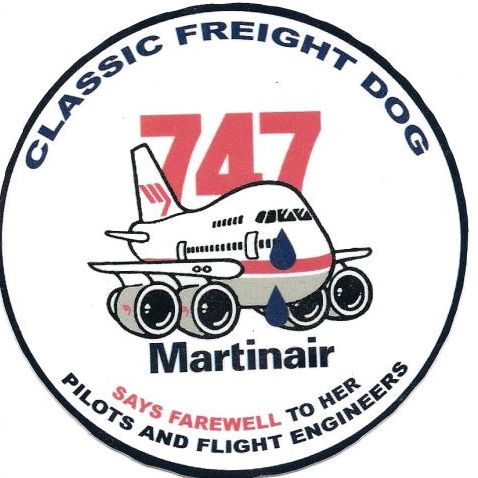Moderators: richierich, ua900, PanAm_DC10, hOMSaR
-

- LaunchDetected
- Posts: 713
- Joined:
Differences between Airbus and Boeing troubleshooting
Hi, I am not familiar at all with the Boeing troubleshooting philosophy. I heard that when a fault occurs on a Boeing (let's say a 787), troubleshooting must be performed as instructed, and then the suspected component must be replaced as precaution.
While on an Airbus (let's say an A350), maintenance must follow closely the troubleshooting steps, and remove the component only if it is clearly written in the documentation. Removing the component "by precaution" on an Airbus often leads to No Fault Found in shop.
Is this difference between Boeing and Airbus troubleshooting philosophies real, or is it just a misconception?
While on an Airbus (let's say an A350), maintenance must follow closely the troubleshooting steps, and remove the component only if it is clearly written in the documentation. Removing the component "by precaution" on an Airbus often leads to No Fault Found in shop.
Is this difference between Boeing and Airbus troubleshooting philosophies real, or is it just a misconception?
-

- ReverseFlow
- Posts: 899
- Joined:
Re: Differences between Airbus and Boeing troubleshooting
Surely what you describe is almost the same?
What if the Boeing component replaced by precaution also has No Fault Found?
From what I see in the Airbus troubleshooting manuals it is first replace the potentially affected part as that is the quickest thing on the line and probably the most likely cause and then do the other things like wiring etc.
It is more likely that component has failed than a wire broken etc that has been fine for years
What if the Boeing component replaced by precaution also has No Fault Found?
From what I see in the Airbus troubleshooting manuals it is first replace the potentially affected part as that is the quickest thing on the line and probably the most likely cause and then do the other things like wiring etc.
It is more likely that component has failed than a wire broken etc that has been fine for years
-

- celestar345
- Posts: 110
- Joined:
Re: Differences between Airbus and Boeing troubleshooting
Can’t say for Airbus, the Boeing troubleshooting logic path is to replace the LRU if it is easily replaceable. Otherwise it would be a series of troubleshooting steps to determine the root cause of the problem before jumping into any conclusion.
‘replace for precaution’ doesn’t make sense as it means unnecessary cost but also it kind of defeats the purpose of troubleshooting, which is to determine the root cause of the defect.
‘replace for precaution’ doesn’t make sense as it means unnecessary cost but also it kind of defeats the purpose of troubleshooting, which is to determine the root cause of the defect.
Re: Differences between Airbus and Boeing troubleshooting
Boeings Fault Isolation Manual and Airbus' Troubleshooting Manual basically work the same.
They make you do some checks and tests and depending on the result have you replace the component that's most probably faulty. Test again and if the fault continues, replace the next component and so on. At some point check the wiring.
The main difference is that Airbus wants you to follow their TSM step by step while Boeing allows you to skip steps or do them in a different order.
Quote from the A320 TSM introduction:
Quote from the B777 FIM introduction:
They make you do some checks and tests and depending on the result have you replace the component that's most probably faulty. Test again and if the fault continues, replace the next component and so on. At some point check the wiring.
The main difference is that Airbus wants you to follow their TSM step by step while Boeing allows you to skip steps or do them in a different order.
Quote from the A320 TSM introduction:
Fault Isolation Procedures
Possible Causes
This lists all the suspect items which are replaced or checked during the procedure.
The list is given to enable the collection of all items required to correct the fault and not for "shot-gun" trouble shooting. This form of trouble shooting is not recommended.
Quote from the B777 FIM introduction:
General
(1) The FIM is a tool to help you operate the airplane economically. The procedures in the FIM help you to quickly isolate the cause of each airplane fault.
(2) To isolate the cause of a fault, you can also use your knowledge from:
(a) Your past experience with airplane faults
(b) The conditions under which the fault occurred
(c) The history of faults on your airplane or your fleet.
(3) It is not a requirement to do the steps in the FIM procedure in the order shown. But if you do not plan to follow the FIM procedure exactly, make sure that you read it before you start to isolate the fault. Some FIM procedures start with important steps that have an effect on other steps later in the procedure.
-

- 747classic
- Posts: 5018
- Joined:
Re: Differences between Airbus and Boeing troubleshooting
Indeed Boeing allows a little bit more freedom in isolating a fault, based on detailed system knowledge and experience.
But if you skip (part of) the FIM procedure, you also have to document that properly in the AML.
More important is a proper description of the fault ( in the past via the Fault Reporting Manual -FRM ), otherwise you will start with the wrong FIM procedure.
But if you skip (part of) the FIM procedure, you also have to document that properly in the AML.
More important is a proper description of the fault ( in the past via the Fault Reporting Manual -FRM ), otherwise you will start with the wrong FIM procedure.
